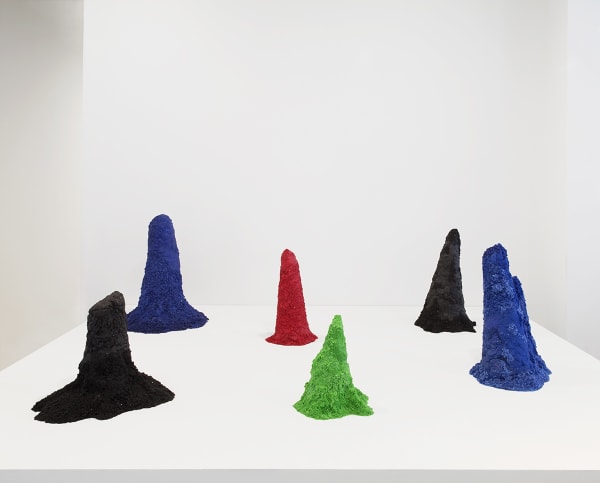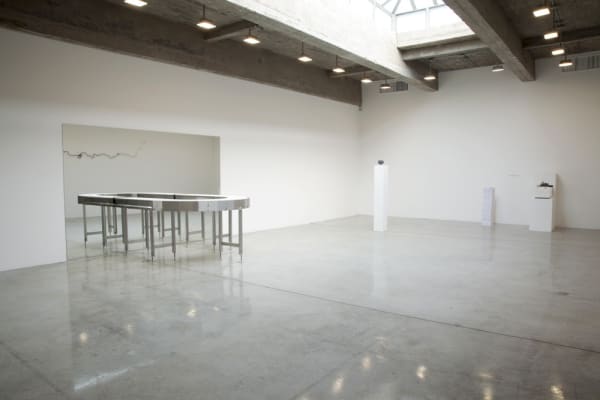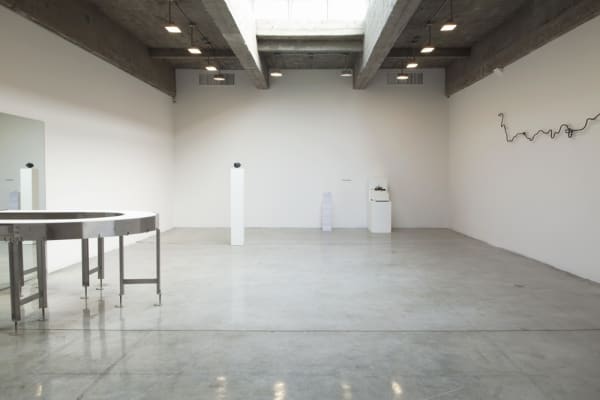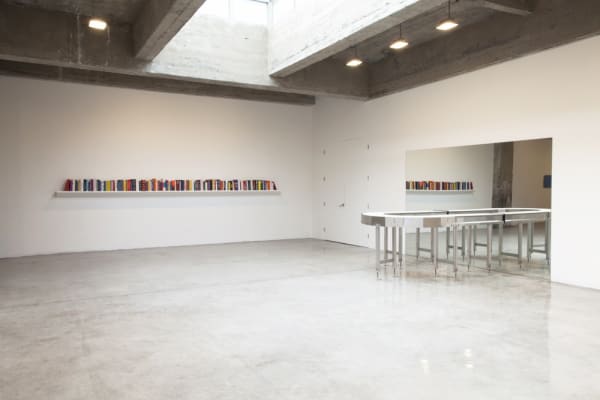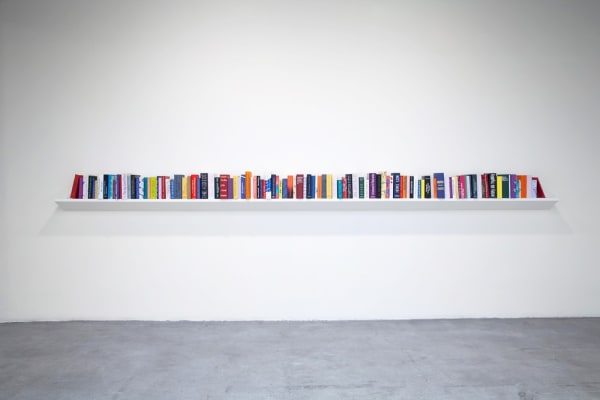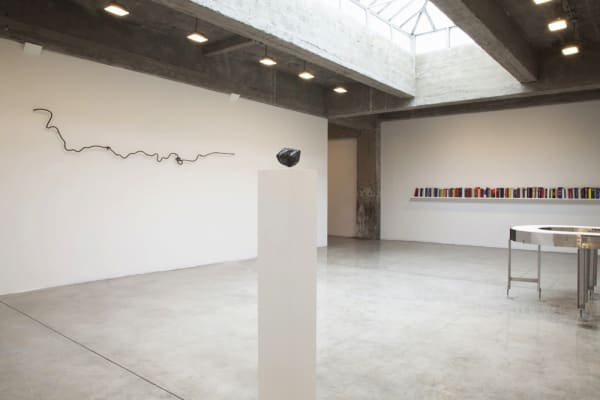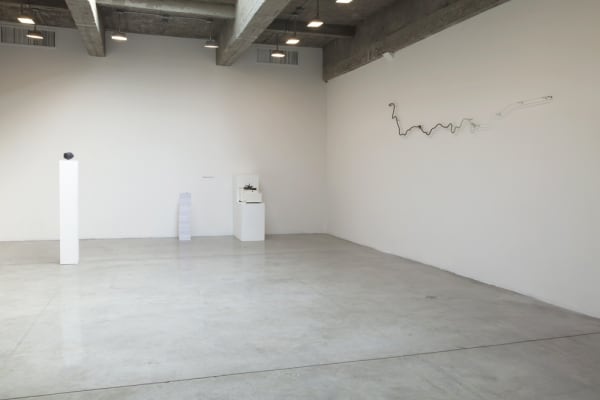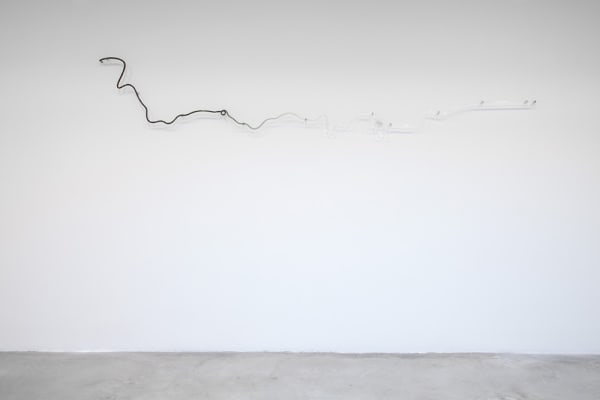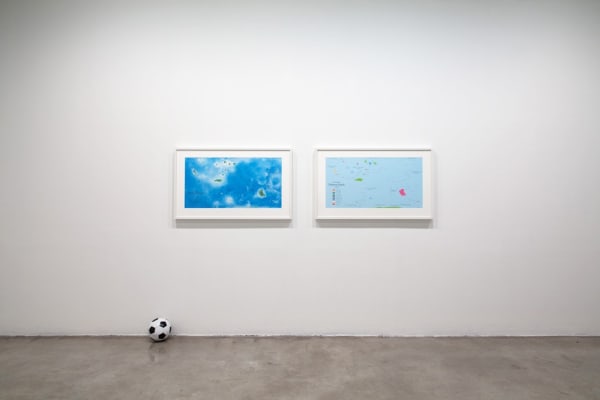AGNIESZKA KURANT: VARIABLES: Tanya Bonakdar Gallery, New York
Tanya Bonakdar Gallery is pleased to present new works by Agnieszka Kurant in the artist’s first solo exhibition at the gallery.
Born in Lodz, Poland and now based in New York, Agnieszka Kurant has developed an exciting body of interdisciplinary work that explores the shifting status of objects and the complex relationships between value, authorship, production, and circulation. She investigates “the economy of the invisible” in which immaterial entities, fictions, and phantoms influence the political and economic systems of the contemporary world. For the artist's first solo presentation at Tanya Bonakdar Gallery, Kurant weaves together the phenomena of collective intelligence, emergence, hybrid authorship, immaterial labor, and virtual capital to create a stunning presentation of installation and sculpture. In the exhibition, Kurant questions the myth of artistic creativity as an individual process, and how surplus value is captured in society.
Two concepts inspire the works in the exhibition. First is the Mechanical Turk, an 18th century automaton chess player that subsequently inspired the Amazon Mechanical Turk, a crowdsourcing internet marketplace that enables individuals or businesses to co-ordinate the use of human collective intelligence to perform tasks that computers are currently unable to do. Secondly, Kurant is intrigued by ideas of alternative theories of evolution and artificial life research pioneered by the mathematician Nils Barricelli’s experiments with algorithmic organisms evolving in a numerical universe. These concepts, which form the topical basis for the works in the exhibition, also connect to Kurant’s broader interest in relationships between economy and magic, complex systems, the historic quest to invent the perpetual motion machine, and the concept of “playbor,” in which value is harnessed unbeknownst to the worker through labor masked as play.
Part of an ongoing exploration of collective intelligence, Kurant will present The End of Signature, which engages technology’s role in the obfuscation of individual authorship, the decline of handwriting in our civilization, and its gradual replacement by keystrokes on technological devices. This work compiles the handwritten signatures of hundreds of participants that are morphed into a single form via software Kurant developed with a professional programmer. The collective signature will be executed in a sculpture of black neon, which will constantly appear and disappear, from left to right, as though an invisible hand signs in perpetual motion. Visitors to the current exhibition are invited to contribute their own signatures, which will be compiled for the next iteration of the piece.
Among other works in the exhibition that deal with similar themes of collective authorship and value generation are Living Currency and A.A.I. ; two works that allude to the accumulated actions of an invisible labor force. Inconspicuously placed in the entryway of the gallery, Living Currency is a sculpture based on the conversion of energy from kinetic to electrical, as gallery visitors involuntarily perform invisible labor by the very act of entering and exiting the gallery. The accumulated power of viewership is converted and stored in a battery-sculpture, playing with the relationship between energy and currency: how energy can act as or even supplant currency in the broader economy. The sculptural installation A.A.I. (whose title references the concept of “artificial artificial intelligence”) is the product of the collective intelligence of termites to which Kurant outsourced her art production. Termites, just like humans, belong to the few species in nature that have evolved to form complex worker societies, the by-product of their labor produces mounds with architectural qualities, often resembling the ruins of civilizations, pyramids, or cathedrals. Working with entomologists in laboratories at the University of Florida, Kurant employed an entirely unaware worker society of millions of termite specimens to produce sculptural mounds. The artist supplied the termites with alternative building materials such as vividly colored sands, gold, and glitter resulting in the creation of hybrid forms hovering between nature and culture.
Untitled, installed in the main gallery space, is a perpetually moving stainless steel conveyor belt that disappears inside its own mirror reflection. Visually elegant in its minimalist construction, the machine’s hidden mechanics manipulate the perceptual experience, yielding a type of infinite feedback loop. The conveyor belt engages in an invisible production with non-existent workers and products, while the audience involuntarily replaces the absent labor force. Air Rights is a magically levitating meteorite, that gives visual weight to the real estate concept of the empty space above a property, an intangible commodity allowing for the creation of value out of nothing but air.
The major sculptural installation Phantom Library materializes a series of fictional books here-to-fore only referenced within works by authors such as Stanislaw Lem, Philip K. Dick, Roberto Bolaño, Jorge Luis Borges. The artist acquired bar codes and ISBN numbers in order to give each of these phantom objects an economic identity, raising questions about copyright, authorship, and the value of art itself, blurring the increasingly fine line between unique artwork and mass-produced good.
Also dealing with Kurant’s interest in magic and invisible labor, Quasi-Object is an animatronic soccer ball, which seems to have an agency of its own. Observing the object’s uncanny movements seemingly operated by non-existent players, questions arise about the nature of the artwork as a living organism.
Since 2004, Kurant's work has been exhibited at museums worldwide including Palais de Tokyo, Tate Modern, Witte de With, Stroom den Haag, Moderna Museet, MoMA PS1 and most notably, at the Polish Pavilion during the 2010 Venice Biennale International Architecture Exhibition. Last November, she opened her first major exhibition in New York at SculptureCenter. Her work was included in Performa Biennial, Bucharest Biennale, Athens Biennale, Moscow Biennale. The artist has an upcoming commission for the Guggenheim Museum (June 2015), a solo show at Botkyrka Konsthal in Stockholm and at CCA in Tel Aviv (both spring 2015).
All installation images above: Photo by Jean Vong
